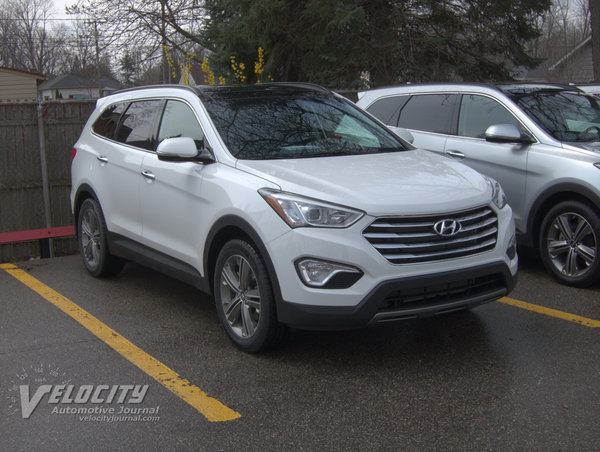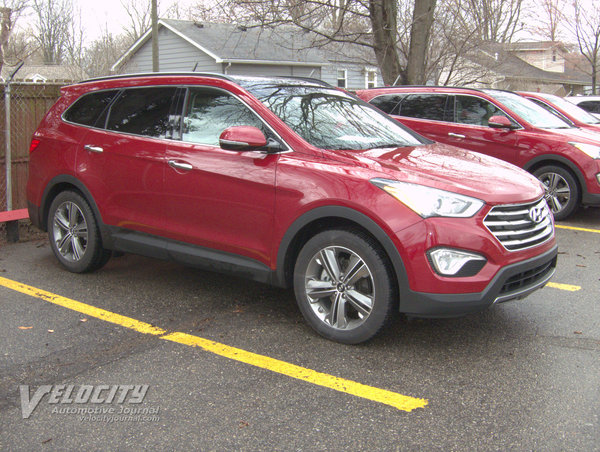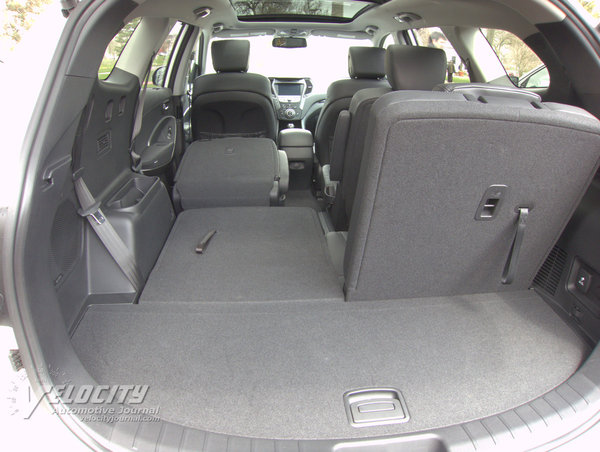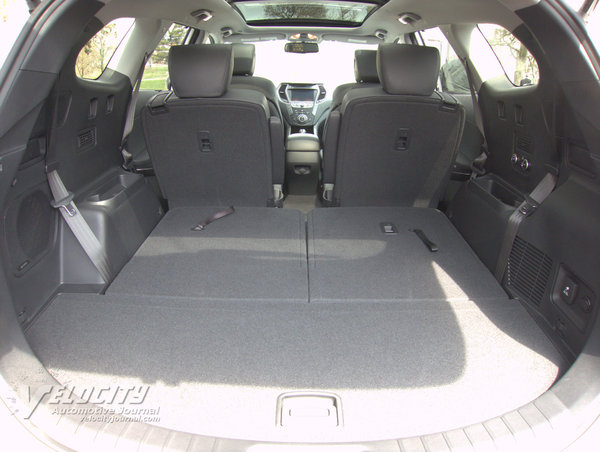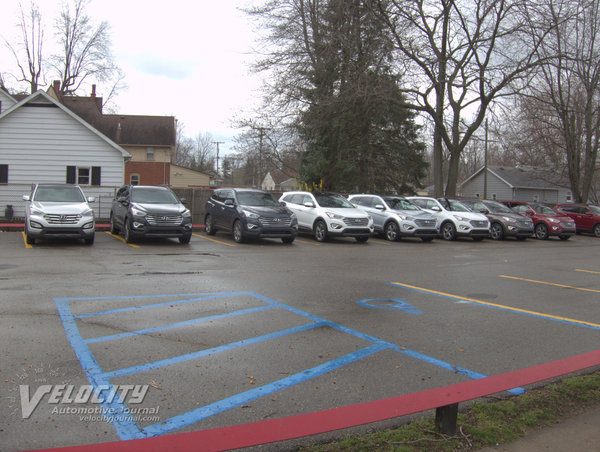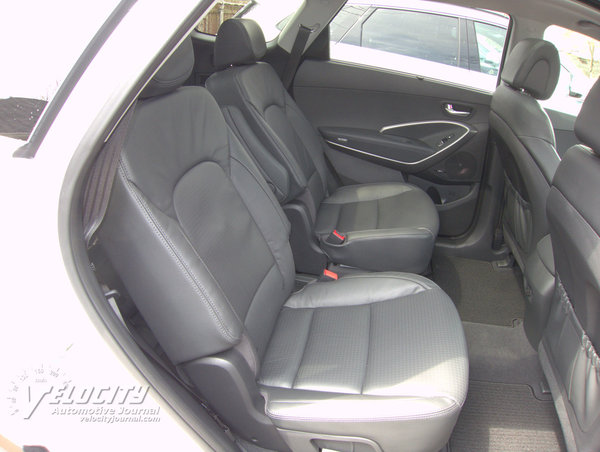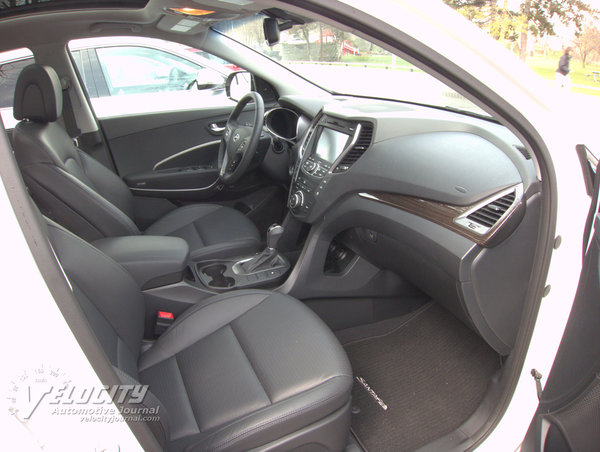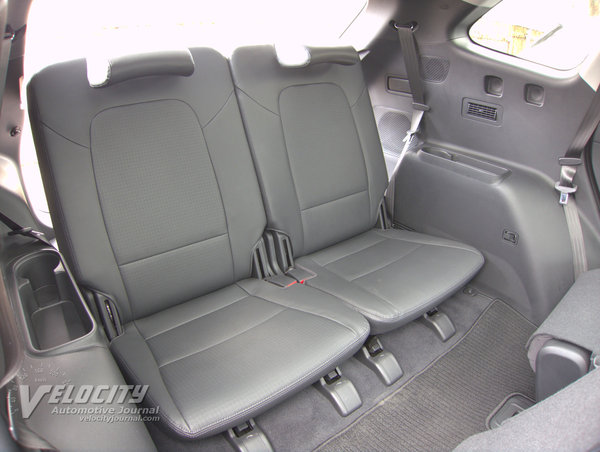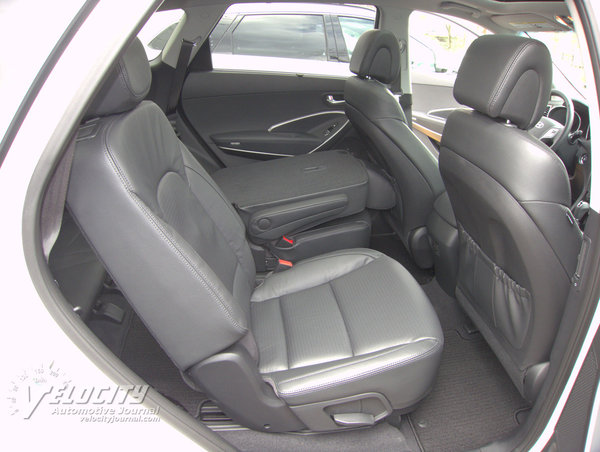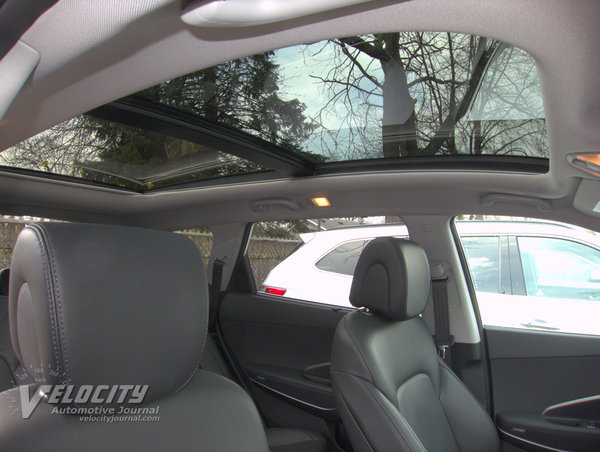2013 Hyundai Santa Fe
06/06/2013
Shahed Hussain
Introduced after smaller Santa Fe Sport, the redesigned 2013 Santa Fe is now the top Hyundai SUV. Essentially a stretched wheelbase version of the Sport, the Santa Fe replaces the slow-selling Vera Cruz. The updated Santa Fe arrives just in time to take on the upcoming Toyota Highlander, Honda Pilot, along with Ford Explorer and Chevrolet Traverse. Hyundai expects the Santa Fe to expand its presence in the midsize SUV segment.
Base price for the Santa Fe starts at $28,600 for front-wheel drive GLS or $33,350 for the fully-equipped Limited. All-wheel drive is $1,750 extra for either model. Notable standard or available equipment includes 18-inch alloy wheels (19-inch optional), driver-selectable steering mode, heated steering wheel, heated front seats and rear seats, leather upholstery, rearview camera, navigation, Bluelink telematics, panoramic sunroof, and Infinity audio system.
The Santa Fe is powered by a DOHC 3.3L V-6 mated to a 6-speed automatic. Equipped with direct injection, the all-aluminum V-6 cranks out 290-bhp @ 6,400 RPM and 252 lb.-ft. @ 5,200 RPM. Front-wheel drive is standard, with optional all-wheel drive available. The new Dynamax AWD system continuously monitors traction and apportions engine power via a multi-plate clutch pack to each wheel as needed. Hyundai uses the typical MacPherson struts in front with a multi-link layout for the rear axle. Both axles get gas-filled dampers and stabilizer bars. Steering assist is via electric motor with 2.95 turns lock-to-lock. Four-wheel disc brakes with ABS and stability control are standard. Curb weight ranges from 3,933 lbs. (GLS FWD) to 4,297 lbs. (Limited AWD). Fuel economy ratings for the FWD Santa Fe is 18/25 (city/hwy.) and 18/24 (city/hwy.) for the all-wheel drive model. Hyundai rates the Santa Fe with a 5,000 lbs. tow capacity.
Hyundai interior design and materials have steadily improved over the past few years. Build quality is a match for any domestic or Japanese competitors in its class. An uncluttered center stack has large buttons and knobs for climate control, audio, and navigation systems. The gauge cluster is crisply backlit for optimum legibility in daylight. Dual 12V outlets, plus USB and auxiliary audio inputs on the console are perfect for charging and connecting mobile devices. The Santa Fe's front seats are reasonably comfortable, but the perforated leather upholstery lacks the expected texture and grain of premium leather. Wood-grain trim on the dashboard adds a dose of interior warmth, but the plastic simulation lacks the depth and clarity of real veneer.
We drove both FWD and AWD Santa Fe models during the press preview, and preferred the AWD model for its superior stability on the highway. The front-wheel drive Santa Fe required more steering correction in crosswinds and over patched and bumpy road surfaces compared to the AWD model. According to Hyundai, the Dynamax all-wheel drive system diverts a small percentage of engine torque to the rear wheels as needed to enhance stability. Suspension tuning was stiffer than we had expected, but the Santa Fe rewarded us with quick reflexes and agile handling, especially considering its hefty two ton curb weight. The 3.3L V-6 provides adequate acceleration when lightly loaded, but its 252 lb-ft. peak torque output is overshadowed by the 269 lb-ft. available at only 1,750 RPM from the 2.0L turbo in the Santa Fe Sport.
Although we only had a few hours to drive the Santa Fe, we were impressed with Hyundai's progress as it strives to match the class-leading SUVs from Ford, Honda, Toyota, and GM. The gap between the Koreans and their better established rivals has narrowed significantly, to the point that for many customers, the Santa Fe may end up being on their short list of "must drive" SUVs.

